Speakers of the 8th Biennale International Scientific Conference “WELLNESS, HEALTH AND QUALITY OF LIFE“
Prague, 2nd November, 2023
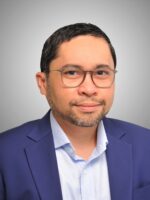
Dr. Arthur Blair Agero, PhD.
United Arab Emirates
Mediclinic Parkview Hospital, Dubai
Website: www.
The Effects of Early Mobilization in the Rehabilitation of Athletes Post-Open Triangular Fibrocartilage Complex Surgery
The Triangular Fibrocartilage Complex or TFCC is one of the most important structures in the wrist. The TFCC is responsible for the stabilization of the wrist and force transmission in the upper limb. The wrist being a dynamic multifaceted joint is subject to various loads that can cause injury to the TFCC. The risks of TFCC injury is increased in the performing athlete such as acrobats.
TFCC injuries in athletes may require surgical repair. Rehabilitation of a TFCC surgical repair typically involves immobilization and up to 1 year of hand therapy. Immobilization is necessary to allow the healing of the ligament complex.
However, mobilization and early commencement of hand therapy can enable the performing athlete to return to work within 2-3 months, therefore reducing the expected rehabilitation period. This study presents the cases of athletes who have undergone the approach of early mobilization after their surgery.
Keywords: TFCC, Athlete, hand surgery, wrist sprain
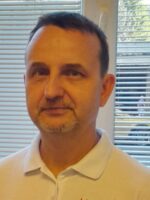
MUDr. Roman Bednár, PhD.
Slovac republic
FNsP F. D. Roosevelta, Banská Bystrica
Pracujem na Rehabilitačnom oddelení vo FNsP F.D. Roosevelta v Banskej Bystrici ako zástupca primára. Prednášam na Slovenskej zdravotníckej univerzite pre lekárov v odbore FBLR a na Fakulte zdravotníctva so sídlom v B. Bystrici pre fyzioterapeutov. Venujem sa problematike liečby pohybového aparátu a tiež využívaniu jogy v rehabilitácii. Vediem programy Joga v rehabilitácii podľa Systému Joga v dennom živote© pre lekárov FBLR a fyzioterapeutov na Slovensku.
I work in Rehabilitation Department of Roosevelt Univesity General Hospital in Banska Bystrica, as deputy of head doctor. I lecture at Slovak Medical Univesity for physicians of PRM and physiotherapists. I deal with the issues of treatment of the musculoskeletal system and also the use of yoga in rehabilitation. I lead programs Yoga in Rehabilitation according to the Yoga in Daily Life for physicians of PRM and physiotherapists in Slovakia.
Pranayama - breathing yoga techniques and its use in high altitude environment according to Maheshvarananda
According to the Yoga in Daily Life© System, there are different types of breathing techniques Nadi Shodhana, Ujjayi, Bhujangini , Bhastrika, Kapala Bhati, which differ in their breathing patterns and hence in their effects. An interesting area of use of pranayama is high altitude where hypobaric hypoxemia and risk of altitude sickness arises. Increased ventilation at higher altitudes causes respiratory alkalosis, which evens out within a day at altitudes around 2,200 m above sea level, while it remains incomplete at around 4,100 m above sea level. Hypoxia activates the sympathetic nervous system response, leading to pulmonary hypertension due to vasoconstriction in the lungs as well as through lesser-known or as yet undiscovered mechanisms. Using modified bhujangini pranayama according to Maheshvarananda improves blood oxygen saturation in the high altitude environment.
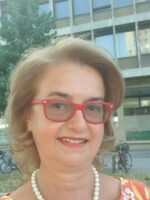
prof. Gordana Devečerski, MD, PhD.
Serbia
Faculty of Medicine University of Novi Sad, Medical Rehabilitation Clinic University Clinical Centre of Vojvodina, Novi Sad
Born in Sarajevo (SFRY ) in 1961. Graduated at the Faculty of Medicine in Novi Sad in 1986, and then received master's degree and specialized at the same faculty. Received PhD at the Faculty of Medicine, University of Belgrade in 1999, in the field of neurophysiology. Became pain medicine subspecialist in 2016. Prof. Gordana Devečerski, PhD, MS, MD has been a full professor at the Faculty of Medicine, University of Novi Sad since 2016, in the scientific field of medical rehabilitation. She teaches medical and nursing students, occupational therapists in full-time, masters and doctoral studies as well as in specialist programs to future medical rehabilitation and pain therapy specialists. During her career, she attended professional study visits in Italy, USA, UAE. She is a member of several domestic and international professional associations. She is the author and co-author of more than 300 professional and scientific papers, published and presented in the country and abroad. She is a member of the examination committees in the country for specialist studies, graduate and doctoral studies, master’s works as well as for diploma recertification at the Ministry of Education, Science and Technological Development. She is employed at the University Clinical Center of Novi Sad, Clinic for Medical Rehabilitation. She is head of the Department of Degenerative Spine Diseases and Pain Therapy. She focused her work and professional career to treating outpatients and inpatients with painful medical rehabilitation conditions.
Quality of Life in Patients with Low Back Pain
Low back pain (LBP) is a widespread ailment that affects millions of people across the globe, posing significant challenges to both patients and healthcare systems. LBP is not merely a physical discomfort, it encompasses a spectrum of emotional, psychological, and social repercussions. It affects mostly adults, particularly those aged 30-60 years. Studies have sugested that aproximately 60-70% of people will experience LBP at some point in their lives, with annual prevalence from 15-45% and women being more frequently affected. Factors such as age, gender, socioeconomic status, and cultural background significantly influence how patients experience and cope with LBP. Purpose of this work is to iluminate factors that influence the quality of life in individuals coping with LBP and emphasise the interplay between physical pain and the emotional suffering, underscoring the importance of holistic care approaches. Furthermore, we delve into the impact of LBP on daily functioning and productivity. Patients often report high levels of pain intensity on the Visual Analog Scale (VAS), which result in significant physical and functional limitations, as indicated by elevated scores on measures like the Oswestry Disability Index (ODI) and Roland-Morris Disability Questionnaire. Symptoms of depression and anxiety, assessed using Beck Depression Inventory (BDI) and Hospital Anxiety and Depression Scale (HADS), imply the deterioration of mental health and overall quality of life of these patients. From modified work environments to adaptive strategies, we explore the myriad ways in which healthcare professionals can help patients to maintain and improve their quality of life. In conclusion, this work underscores the need for a comprehensive, patient-centered approach that addresses the physical, emotional, and social dimensions of this condition. By recognizing the unique circumstances of each patient, healthcare providers can make a profound difference in enhancing the quality of life for those living with low back pain.
Keywords: Low back pain, Quality of Life, functional status.
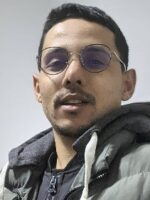
Dr. Abd Essamed Guettouche, Dr. Abdelkader Belkheir, Ishak Torki, PhD.
Algeria
Shahid Guettouche Khalifa Bin Mohammed high School – Algeria
The Role of Extracurricular Sports Activities in Enhancing Life Enjoyment for High School Students
The study aims to ascertain how extracurricular sports activities affect high school students‘ quality of life. Using a descriptive survey approach and the Life Enjoyment Scale as a data collecting tool, the study was carried out on a randomly selected sample of 381 male and female students. The findings revealed differences in students‘ ratings on the Life Enjoyment Scale in favor of those who participated in extracurricular sports activities, confirming an encouraging association between extracurricular sports activities and enjoyment of life. The research recommended encouraging high school students to take part in extracurricular sports since they can improve their quality of life and mental health, increase social participation, and strengthen interpersonal connections.
Keywords: Extracurricular sports activities, Enjoyment of Life, Adolescence
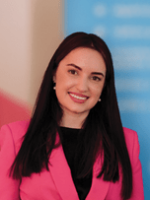
Ing. Alina Huseynli, MBA
Czech Republic
Institute of Spa and Balneology, Karlovy Vary
The Importance of Applied Research in the field of spa and balneology
The rapid progression of modernization and digital transformation will undeniably occupy a central role in delineating the trajectory of future spa healthcare services. This transition, predominantly characterized by enhancements in healthcare standards, innovative strides in diagnostic methodologies, therapeutic intervention techniques, and preventative strategies, signifies a pivotal shift in the sector. The systematic integration of digital technologies, coupled with the application of advanced data analytics and machine learning, facilitates incessant monitoring of patients‘ vital functions, permitting the timely detection of alterations in health statuses and fostering individualized approaches to treatment. Moreover, this evolution engenders the efficient aggregation of a voluminous amount of medical data, culminating in the facilitation of a more objective and quantitative analysis of spa care outcomes. In this scenario, a novel dimension in patient care is unveiled, whereby the utilization of contemporary technologies and innovative methodologies enables the formulation of treatment strategies that are notably integrated and holistic, yet firmly grounded on a robust scientific foundation. In this context, the pivotal role of applied research, in conjunction with an efficacious transfer of knowledge and technology, cannot be overstated.
Keywords: spa, balneology, research, trends
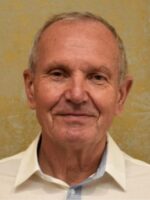
Assoc. Prof. PaedDr. Petr Kolisko, PhD.
Czech Republic
Palestra College of Physical Education and Sports, Prague
Zabývá se od roku 1992 výzkumem a propagací přírodních prostředků podpory zdraví v prevenci a léčbě onemocnění hromadného výskytu. Do roku 2010 působil na Fakultě tělesné kultury UP Olomouc. Od roku 2008 spolupracuje s balneologickou klinikou hotelu Prezident Karlovy Vary. Věnuje se problematice psychosomatických onemocnění a výzkumu efektů přírodních léčivých zdrojů na organismus člověka. Přednáší na VŠ Palestra Praha. V roce 2023 obdržel cenu města Karlových Varů za propagaci lázeňství.
Since 1992, he has been involved in research and promotion of natural remedies for health support in the prevention and treatment of mass diseases. Until 2010, he worked at the Faculty of Physical Culture at Palacký University in Olomouc. Since 2008, he has been collaborating with the balneological clinic at the Prezident Hotel in Karlovy Vary. He focuses on the issues of psychosomatic illnesses and researches the effects of natural healing resources on the human body. He lectures at Palestra University in Prague. In 2023, he received the Karlovy Vary City Award for the promotion of spa treatments.
Influence of Static and Dynamic Changes in Body Position on Functional Changes of the Cardiovascular System
Abstract:
The autonomic nervous system (ANS) plays an important role in the regulation of heart activity, breathing and blood pressure. Through changes in sympathetic and parasympathetic activity, it participates in the regulation, coordination and integration of internal organ function. The method of spectral analysis of heart rate variability (SAHRV) is used to examine the functional status of autonomic regulation of heart activity. During the examination, clino-ortho-clinostasis is used, which makes it possible to assess the reactivity of functional changes in the sympathetic and parasympathetic systems.
We were therefore interested in what functional changes in the autonomic regulation of heart activity will occur during static and dynamic changes in the position of the body head down and up at angles of ± 45°.
For the research, we used the method of spectral analysis of heart rate variability, supplemented by blood pressure measurement during the experiment. The experimental group included 24 healthy women aged 20-30. Before and after the experiment, a standard examination of the functional state of the autonomic nervous system was performed in the clino-ortho-clinostatic position.
During the experimental sequence, changes in sympathetic, vagus, heart rate and blood pressure reactivity were monitored in the following positions:
- in an inclined position of the body with the head up – angle +45°
- in an inclined position of the body with the head down – angle -45°
- during dynamic changes in oblique body positions +-45°
An auto-traction reclining couch was used for the investigation of oblique positions.
The results
During the application of oblique positions of the body, there are significant changes in the activity of the autonomic regulation of heart activity.
In the head down position, there is an increased activation of the parasympathetic, a decrease in heart rate and an increase in systolic and diastolic pressure.
During dynamic changes in body positions +- 45°, there is significant alternating activation of baroreflexes, modulated by sympathetic and vagal aktivity.
Conclusion
The research study draws attention to the existence to multiple interconnections of regulatory mechanisms between the autonomic nervous system, cardiovascular and cardiorespiratory systems.
Keywords: autonomic nervous system, sympathetic, parasympathetic, oblique body positions ± 45°, spectral analysis of heart rate variability.
The influence of the Carls Bad Thermo-mineral Water on the Autonomic Nervous System
The drinking cure is an essential part of Karlovy Vary spa treatment. The effects of the Karlovy Vary thermo-mineral water are described by a number of authors (Benda, 1997; Třískala et Jandová 2019; etc.).
The effect of Karlovy Vary mineral water on the autonomic nervous system has not yet been investigated. Based on case analyses, we hypothesized that the effects of the drinking cure have an effect on the functional activity of the autonomic nervous system.
The prospective research study had the character of an experiment in clinical conditions.
Research file
Health women n = 15, age 40-50 years.
Methodology
Before and 30 min after the experimental sequence, the functional state of the autonomic nervous system was examined by the method of spectral analysis of heart rate variability in the ortho-clino-orthostatic position.
The experimental sequence:
- rest sitting position (pre)
- Drinking cure in a sitting position (application of 350 ml thermo-mineral water 50°C)
- rest sitting position (post)
Results:
Pre-post status. (30 – 50 minutes after the application of the drinking cure)
- to increase the overall activity of the autonomic nervous system.
- to increase activity in the sympathetic and parasympathetic frequency bands
- to reduce the heart rate
- blood pressure values do not change
Effects during the application of the drinking cure (comparison with a rest sitting position):
- Decrease in the overall activity of the autonomic nervous system
- Increase in sympathetic activity and decrease in parasympathetic activity
- Increase in heart rate
- Increase in systolic and diastolic blood pressure.
Conclusions
-
- A prospective research study highlighted the reflexive relationships between the digestive system and the cardiovascular system. These relationships are modulated by the autonomic nervous system.
- Factors that influence the effect of the drinking cure in the area of the upper part of the digestive system are: the rhythm of swallowing and the temperature of the water.
Factors that influence the post-effect of the drinking cure in the area of the duodenum and jejunum they probably are: high content of free carbon dioxide and bicarbonate ions in the Carls Bad thermomineral water. These factors apparently activate the motility of the intestinal tract and have an effect on systemic changes of the functional status of the autonomic nervous system.
Keywords: Thermomineral Carls Bad water, drinking cure, spectral analyzes of heart rate variability, autonomic nervous system, gastrointestinal system.
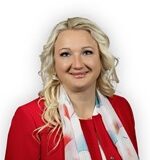
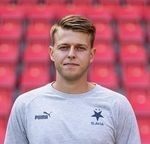
Ass. Prof. PhDr. Zuzana Kornatovská, PhD., Václav Šabršula, BA
PhDr. Zuzana Kornatovská, Ph.D.
University of South Bohemia, České Budějovice, Czech Republic
Bc. Václav Šabršula
masér ve Slavii u kategorie U19, Střední škola průmyslová škola elektrotechnická a Gymnázium V Úžlabině
PhDr. Zuzana Kornatovska, PhD., DiS.
2009 – till now Assistant Professor, University of South Bohemia in Ceske Budejovice, Faculty of Education, Department Education
2016 – Title PhDr. Rigorous examination: Faculty of PE and Sport, Charles University in Prague
2014 – Title PhD. Faculty of Health and Social Studies, University of South Bohemia in Ceske Budejovice, Study program: Prevention, correction and therapy of the health and social problems in children, adults and seniors. Research and theses: KORNATOVSKA, Z. (2014) Availability, organizations and health – social benefits of the controlled movements activities in children with disability. ZSF JU: Ceske Budejovice.
Wellness procedures applied in the regeneration of top football players
Top footballers increasingly use the methods of biological regeneration and so-called spa or wellness procedures. This global concept is characterized by the targeted restoration of the athlete’s full physical and mental fitness after overload, exhausting physical and mental exertion and local fatigue of the musculoskeletal system. These are primarily effects aimed at activating relaxation processes, which is closely related to the protection and improvement of athletes‘ health. As a result, the demand for effective regenerative wellness methods is increasing in the market, and the effectiveness then depends on both expertise in the application of regenerative wellness methods and specialized equipment. The focus of our contribution is to provide an overview of proven, traditionally established regeneration methods as well as wellness methods newly applied to top football players. The aim of the presented study was to map the possibilities of available resources for regeneration for football players of the A team and B team, the second goal was to prepare a comprehensive overview of all methods and means of regeneration that could be used by the players of the football club SK Dynamo České Budějovice. The method of non-standardized questionnaire survey „Regeneration as part of football training“ was used. It was found that top football players consider regeneration as an important factor for quality performance, as important as quality training, and more important than cooperation with a sports psychologist. The results show that the players of the A team of SK Dynamo České Budějovice regenerate at least 3 times a week, the players of the B team 1x a week. A team players are more aware of the importance of recovery than B team players. Football is their job and they like to use the regenerative means that the club offers. The B team is made up of younger players and the players go to work and have football as a hobby, so there is often not enough time for regeneration in terms of workload. Furthermore, it was found that massage as a form of regeneration is the most popular. The players of the A team use massages to regenerate the body twice a week, and the players of the B team once a week. The training units carry a similar training load for the players, but the A team players have masseurs available throughout the week, while the B team players only have a club masseur available 1-2x per week. It has been found that the most common wellness procedures used by top footballers are actually a traditional mix of regenerative methods including various procedures from infrared radiation, hydrotherapy, cryotherapy, heat therapy, electrotherapy, magnetotherapy, ultrasound therapy, massage and balneotherapy.
Keywords: egeneration, football, training, massage, physical activity, health
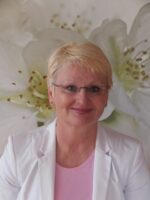
Prof. PaedDr. Milada Krejčí, PhD.
Czech Republic
College of Physical Education and Sport PALESTRA, Prague
Professor of Kinanthropology – Sports Humanities, Vice-Rector for Science and Research; Head of Dept. of Wellness, guarantor of the master study program “Wellness Science” in College of Physical Education and Sport PALESTRA, Prague, Czech Republic. President of „Society of Research in Wellness“, member of the council of the “Czech Wellness Institute”; member of the scientific council of the “Czech Association of Adapted Physical Activities”. Teaching in Master degree study program courses: „Active lifestyle and circadian preferences“, „Health prevention and wellness in 21st century“; „Philosophical and intercultural aspects in wellness“; „Yoga“. Evaluator of the Expert panel of the Medical and Health Sciences, the Government Advice for Sciences, Research and Innovations, Czech Republic. Invited speaker in many international congresses/conferences, the last one: 6th World Congress on Physical Therapy and Rehabilitation Medicine, Rome, 4-5.10.2023, Keynote lecture: Krejčí, M. Effects of sleep on physical therapy and resilience. Often invited professor to Universities in Europe and out of Europe (Austria, Canada, India, Japan, Poland, Slovenia, Slovakia, etc.). The member of 6th editorial boards of the international scientific journals, as “Acta Salus Vitae”; “Disabilities and Impairments”, “European Journal of Physical Education and Sport“, etc. Major investigator or co-investigator of 25 national or international research projects. Her research is focused on the effects of health-oriented interventions, on basic balance research and basic resilience research in seniors and on circadian rhythms and sleep determinants. Author or coauthor of 16 monographs, 7 chapters in monographs, of 167 scientific articles, of 12 textbooks.
Overnight therapy, sleep wellness as a new wellness trend
Inadequate sleep habits and poor sleep health represents a global problem. Therefore more and more attention is paid to sleep, not only in the field of health promotion, health education, public health, but also in the field of wellness. People are becoming more and more interested in the problems of what lack of sleep has to do with overweight and obesity, how sleep effects on fitness, what are the risks of insufficient sleep time. Prioritizing rest and regeneration always created the important part of wellness phenomena. In nowadays there is proclamation of „overnight therapy“, „sleep wellness“ in the wellness area. The so-called „sleep tourism“ has been on the rise since 2020 and represents a new significant trend in wellness hotels. Really it is by research confirmed, that lack of sleep can contribute to chronic diseases such as overweight and obesity, cardiovascular disease and diabetes, as well as negative vascular, immune and inflammatory reactions. Lack of sleep can also lead to depression and other mood disorders and reduced cognitive performance, including memory and learning problems. Injuries at the workplace, accidents and professional mistakes at the workplace can be caused by insufficient sleep, as daytime sleepiness and fatigue have a negative effect on concentration and on simple and disjunctive reaction time. The aim of the contribution is to reflect on the perspectives of the development of „sleep wellness“ within the framework of wellness education in individual age groups of clients. “Sleep wellness” may bring significant benefits in the area of “Work Place Wellness”, because lack of sleep is a common phenomenon in the work environment (stressful personnel, soldiers, police officers, etc. professions). Thus, the relaxation techniques become very important in the wellness education in context with the sleep improving, as it is a process that reduces the negative effects of mental and physical stress on the human organism. In the area of wellness may be relatively easy, safe and inexpensive to learn clients in basic relaxation techniques. The benefits of mastering relaxation techniques is analyzed and presented in research studies. This is mainly a slowing of heart rate, lowering blood pressure, slowing breathing rate, improving digestion, control of blood sugar level, reduction of the activity of stress hormones, increasing of blood flow to major muscles, reduction of muscle tension and chronic pain, mood improvement, reduction of fatigue and self-confidence increasing. All this contributes to the improvement of sleep quality. Wellness education is a traditional wellness branch. As a new wellness trend, it can emphasize and offer resources and intervention programs, led by wellness professionals, to promote and support healthy sleep wellness choices and behavior.
Keywords: Health promotion, sleep wellness, resilience, wellbeing, quality of life
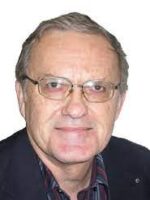
Assoc. Prof. Ing. Miroslav Marek, PhD.
Czech Republic
Institute of Spa and Balneology, Karlovy Vary
Vystudoval Vysokou školu chemicko-technologickou v Praze v letech 1969-74, v r. 1978 obhájil kandidátskou disertační práci a v r. 1985 byl jmenován docentem na VŠCHT v Praze. Je autorem nebo spoluautorem více než 150 publikací v impaktovaných vědeckých časopisech a 60 patentů a užitných vzorů. Na VŠCHT se podílel na pedagogické činnosti jako přednášející, vedoucí diplomových a doktorských prací, jako vedoucí Biotechnologického centra a proděkan Fakulty potravinářské a biochemické technologie. Po celý život měl snahu o realizaci výsledků vědy a výzkumu v praxi, proto inicioval podle vzoru University of Cambridge vytvoření „spin off“ firmy při VŠCHT (Tesoro Spin off, s.r.o.) pro transfer technologií do praxe. Od roku 2019 pracuje v Institutu lázeňství a balneologie,v.v.i., v Karlových Varech jako vědecký pracovník. Jeho hlavním zaměřením je chemie přírodních látek s návazností v oblastech peloidů, balneologie, zdravotnictví a životního prostředí, především lázeňské terapeutické krajiny.
He graduated from the University of Chemistry and Technology in Prague between 1969 and 1974. In 1978, he defended his doctoral thesis, and in 1985, he was appointed as an associate professor at the University of Chemistry and Technology in Prague. He is the author or co-author of more than 150 publications in high-impact scientific journals and holds 60 patents and utility models. At the University of Chemistry and Technology in Prague, he was involved in educational activities as a lecturer, supervisor of master’s and doctoral theses, director of the Biotechnology Center, and vice-dean of the Faculty of Food and Biochemical Technology. Throughout his life, he strived to apply the results of science and research in practice, which is why he initiated the establishment of a „spin-off“ company at the University of Chemistry and Technology in Prague, following the model of the University of Cambridge, for the transfer of technologies into practice (Tesoro Spin off, s.r.o.). Since 2019, he has been working as a researcher at the Institute of Spa and Balneology in Karlovy Vary. His main focus is on the chemistry of natural substances, particularly in the areas of peloids, balneology, healthcare, and the environment, especially in the context of spa therapeutic landscapes.
Support of the flora of the spa therapeutic landscape
The developed method of supporting the growth and vitality of cultivated forest trees, ornamental shrubs, grassy areas and flora in spa parks, forest parks and spa forest stands consists in the application of ectomycorrhizal, or endomycorrhizal fungi, which can utilize a much larger volume of soil with the help of extramatrical hyphae than the root hairs of non-mycorrhizal plants alone. Resistance to phytopathogenic fungi is significantly reduced by a lack of moisture (during summer droughts). Therefore, the addition of biochar, natural polysaccharides based on carrageenan, alginate or xanthan, humic substances, peat and crushed bork (preferably disintegrated using hydrodynamic cavitation) and a porous inorganic carrier significantly contributes to the protection of the flora. In ongoing symbiosis between plants and added mycorrhizal fungi, there is mutual influence of nutrient exchange between the mycorrhizal fungus and the host plant, and these physiological processes are mainly manifested in nutrient cycling in ecosystems. The increased vitality of plants contributes to the creation of a pleasant, healthy environment in spa forests, forest parks and gardens.
Keywords: mycorrhizal fungi, biochar, hydrocolloids, vitality of plants, spa therapeutic landscape
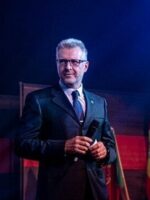
Ass. Prof. Mgr. Tomáš Mirovský, DiS., MBA
Czech Republic
College of Physical Education and Sport PALESTRA, Prague
Prorektor VŠTVS PALESTRA, který se zajímá o management sportovních akcí a profesně se zaměřuje na zapojení dobrovolníků do organizace velkých sportovních akcí. Podílí se na organizaci běžeckých závodů série RUNCZECH, na projektu Olympijských festivalů a aktuálně i na přípravě Mistrovství světa IIHF v ledním hokeji 2024.
The Vice-Rector of PALESTRA University, who is interested in sports event management and professionally focuses on involving volunteers in the organization of major sports events. He is involved in the organization of running races in the RUNCZECH series, the Olympic Festival project, and is currently also contributing to the preparation of the 2024 IIHF Ice Hockey World Championship.
Volunteering at sporting events and quality of life
The paper focuses on the motives of the volunteers that led them to actively participate in the organization of the Olympic Festivals in 2021 and 2022 in Brno and Praha. The Olympic Festivals are a project of the Czech Olympic Committee, which take place during the Olympic Games. This project was created under the name „Olympic Park“ in 2014 and takes place at different locations every two years, during the Summer or Winter Games. In 2021 it was held in Prague and Brno, and in 2022 in Brno.
The results are based on responses from 131 volunteer questionnaires, where, among other things, volunteers rated their motives for participating according to the Olympic Volunteer Motivation Scale (OVMS). The questionnaire also asked „What was the biggest experience/impression you took away from the Olympic Festival as a volunteer?“
This information is very important for the organiser to know. First of all, it is important feedback on the realized event. Secondly for the long term cooperation with volunteers and thirdly for the right setting of the offer of participation in future events. In this way he can not only reach as many volunteers as possible to participate, but also prepare the best conditions for them so that their participation is an experience. This will then have a positive impact on their quality of life.
WHO defines Quality of Life as an individual’s perception of their position in life in the context of the culture and value systems in which they live and in relation to their goals, expectations, standards and concerns.
Positive experiences are one of the important benefits of volunteering. The definition of volunteering according to Sozanská and Tošner (2002, 2006) is: „Public service volunteering is a conscious, freely chosen activity for the benefit of others, provided by citizens free of charge. The volunteer consciously gives part of his/her time, energy and abilities for the benefit of an activity that is defined in time and content. Volunteering can be professionally organised without losing its spontaneity. It is a regular and reliable source of help for the citizen or organisation working with the volunteers and a source of new experiences and opportunities for personal growth for the volunteers.“
Thanks to the long-term cooperation with volunteers in the organisation of the Olympic Festivals, the results of the above questionnaire are already being applied now, during the recruitment process for the 2024 Olympic Festival, which will take place on Jezero Most during the Summer Olympic Games in Paris.
Keywords: Olympic festival, volunteering, quality of life, Olympic Volunteer Motivation Scale
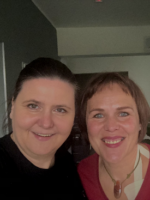
Ass. Prof. Eva Nechlebová, MA, PhD., Monika van Rooij, MSc.
Mgr. Eva Nechlebová, Ph.D.
Czech Republic
College of Physical Education and Sport PALESTRA, Prague, Czech Republic
Monika van Rooij MSc.
Netherland
Holistic Body Therapist – Kromme-Elleboog, Finsterwolde
For over 20 years, I have been dedicated to promoting health, not only as an aerobics and yoga instructor but also as the founder and operator of my own clinic, Holistic Body Therapist, in the Netherlands. I specialize in addressing chronic musculoskeletal conditions, scoliosis, intervertebral disc herniations, leg length discrepancies, and post-injury recovery. I assist individuals with chronic issues through therapeutic techniques and, most importantly, by assessing the overall musculoskeletal system and psychological well-being to uncover the root cause. My mission is to alleviate long-term discomfort and significantly improve the quality of life.
Více než 20 let se věnuji podpoře zdraví jako ale i jako lektorka aerobiku a jógy. Založila jsem a provozuji vlastní ordinaci – Holistic Body Therapist v Holandsku. Zabývám se dlouhodobými bolestivými stavy pohybového aparátu, skoliózou, výhřezy meziobratlového disku, rozdílnou délkou dolních končetin, rekonvalescencí po zranění. Pomáhám od chronických obtíží díky terapeutickým technikám a hlavně celkovou kontrolou pohybového aparátu i psychického stavu, abych zjistila skutečnou příčinu. Mým posláním je zmírnit dlouhodobé obtíže a výrazně zlepšit kvalitu života.
The importance of initial diagnosis and interventional exercises on posture
The article describes the importance of diagnosing differences in lower limb length and the impact on overall musculoskeletal stability and the effectiveness of regular interventional exercise. A case report of one person is used in the article. An analysis of the length of the lower limbs was performed using radiographs, anthropometric measurements and photodocumentation. Based on the results, an intervention program was designed, which included the Dorn method and Spiral Spinal Stabilization exercise for 3 months at a frequency of 2-3 times a day for 15 minutes. The exercises were continuously modified to always meet the current need for correction of the area. Exit examination shows that the foot position has improved as well as muscle corset and posture. The client continues to exercise and is without difficulty.
Keywords: Initial diagnosis, intervention exercises, posture, unstable lower limb length, unilateral loading
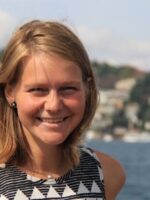
Ass. Prof. Jana Nováková Stará,MA, PhD.
Czech Republic
Czech Wellness Institute; Masaryk University Brno
Je lektorkou, výzkumnicí a certifikovanou koučkou. Při práci s univerzitními studenty, s vlastními dětmi i se skupinami z různých koutů světa se inspiruje odkazem zakladatele wellness hnutí Johna W. Travise a metodami Wellness Inventory koučingu. Zajímá ji propojení teoretických pouček a doporučení s každodenním životem člověka a wellness odborníka/ce.
She is a lecturer, researcher, and certified coach. When working with university students, her own children, and groups from different parts of the world, she draws inspiration from the founder of the wellness movement, John W. Travis, and the methods of Wellness Inventory coaching. She is interested in the connection between theoretical principles and recommendations with the daily lives of individuals and wellness professionals.
Family wellness' in the work and life of John Travis
John Travis created a model and theory of wellness that has become a worldwide trend. In the year when H.L. Dunn died (1975) J. Travis founded the first Wellness Resource Center in California. Travis‘ commercial eight-month program includes relaxation techniques, self-evaluation, communication training, creativity support, diet and fitness improvement, visualization techniques, etc. Travis‘ main idea is to help clients get to know each other better, so that they can take better care of their health. From the medical interest in the health of the individual, he gradually focused more on the broader perspective of supporting the health of the family. The talk will focus on Travis‘ professional activities following the closure of his wellness center, as well as his personal story, which is as inseparable from his work as it is inspiring.
Keywords: Family, health, Travis´ wellness concept, wellness
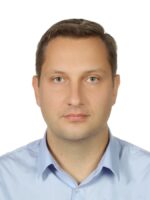
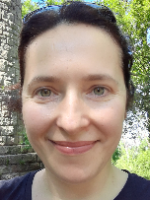
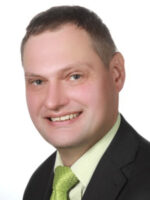
dr. hab. Paweł Piepiora, Dr. Justyna Bagińska, PhD., Assoc. Prof. Zbigniew Norbert Piepiora, DSc.
Poland
Faculty of Physical Education and Sports, Wroclaw University of Health and Sport Sciences, 51-612 Wrocław
https://orcid.org/0000-0002-6525-3936
e-mail: pawel.piepiora@awf.wroc.pl
Assoc. Prof. Paweł Adam Piepiora, DSc.
Associate Professor in the Department of Sports Didactics & Head of the Leading Research Team in Social Sciences at the Wroclaw University of Health and Sport Sciences
Habilitated doctor in the field of medical sciences and health sciences in the discipline of physical culture sciences, sports psychologist, pedagogue, chartered teacher, education manager, neurotherapist, master class trainer, trainer in 14 sports, holder of the 8 dan degree and ‘Shihan’ title in shotokan karate, world class referee in shotokan karate and international class in sports karate, multiple medallist of the World and Polish Championships in shotokan karate and the Polish Academic Championships in Olympic karate.
Author or co-author of over one hundred scientific publications, author of the ‘Karate Compendium,’ participant in numerous international scientific conferences.
Dr. Justyna Bagińska, PhD.
Faculty of Humanities and Social Sciences, Karkonosze University of Applied Sciences in Jelenia Góra, 58-506 Jelenia Góra, Poland.
https://orcid.org/0000-0001-5540-3665
Graduate of the University of Wrocław: PhD in Geosciences, specializing in socio-economic geography (2009) and MA in English Philology (2008). In 2009-2019, she was assistant professor in the Department of Tourism at the Wrocław University of Health and Sport Sciences. In 2020-2023, Assistant Professor in the Department of Tourism and Recreation at the Wrocław Business University of Applied Sciences. Currently assistant professor at the Department of Social Sciences at the Karkonosze University of Applied Sciences in Jelenia Góra.
Translator of scientific and popular texts, author and co-author of scientific papers in the field of transport accessibility, socio-economic aspects of tourism, broad range of cultural tourism, and recently also the psychology of sport and geography of sport. Participant in Polish and international conferences, training, teaching, and research internships.
Assoc. Prof. Zbigniew Norbert Piepiora, DSc.
Associate Professor in the Department of Spatial Economics at the Wroclaw University of Environmental and Life Sciences
https://orcid.org/0000-0002-0259-4004
A researcher in economic sciences and a Polish environmental economist. In 2014, he became an alumnus of Brown University (US) by participating in the Brown International Advanced Research Institutes (BIARI). He was a speaker, facilitator, and session host during the 2018 BIARI Philippines: Community Resilience for Natural Disasters held at Holy Angel University.
In 2015, he became a fellow of University of Hradec Králové and the Krkonoše Mountains National Park in Czechia. His current research focuses on economic aspects of natural disasters and emergency management such as economic efficiency of structural flood protection, financing of catastrophic damage removal, valuation of environment, safety and landscape. He is the tour guide for area of the Karkonosze National Park and the tour guide for area of Sudetes.
Geography of Olympic combat sports – a new interdisciplinary research direction
Background & Study Aim
The geography of Olympic combat sports is an intersection of physical culture, humanities, social, and Earth sciences. Moreover, this new interdisciplinary research direction overlaps with the areas of health and quality of life. Therefore, the aim of this paper was to present the value of these areas in the geography of Olympic combat sports.
Material & Methods
The research work on the geography of Olympic combat sports is a new research line and has been conducted since 2022. Quantitative research is conducted based on the International Olympic Committee’s sports performance summaries while qualitative research is conducted based on analyses of source materials (scientific articles and books) and interviews with combat sports athletes.
Results
The geography of Olympic combat sports presents new knowledge about boxing, fencing, judo, karate, modern pentathlon, taekwondo, and wrestling. It was observed that: specific countries indeed dominate combat sports competitions; specific countries identify themselves with specific combat sports; cultural influences shape the development of combat sports; geographical, historical, and social conditions affect the popularity of specific combat sports in given regions of the world. In addition, the athletes surveyed demonstrated a great deal of knowledge about the different areas of the world related to the popularity of specific combat sports.
Conclusions
It was concluded that there is a feedback effect in the geography of Olympic combat sports: people through competing in combat sports educate themselves in geography (historical, cultural, social), and other people through gaining knowledge in geography educate themselves in combat sports (theory and practice). The activity described has health values and a positive impact on quality of life. Thus, there is a positive correlation between the development of the body and the mind, which consequently carries over to the psychomotor development of those practicing these combat sports.
Keywords: combat sports, geography of sports, education, health, quality of life.
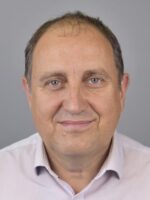
prof. MUDr. Martin Repko, Ph.D.
Czech Republic
Department of Orthopaedic Surgery, Faculty Hospital Brno, Faculty of Medicine, Masaryk University
Orthopaedic Dpt., Faculty Hospital Brno, Jihlavská 20, 625 00 Brno, Czech Republic
Faculty of Medicine, Masaryk University Kamenice 5, 625 00 Brno, Czech Republic
e-mail: repko@med.muni.cz
- Head, Orthopaedic Dpt., Faculty Hospital Brno, Czech Republic
- Chair, Spine Surgery Center, Faculty Hospital Brno, Czech Republic
- Dean, Faculty of Medicine, Masaryk University, Brno, Czech Republic
- Chair, University Centre for scoliosis and spinal deformities, Faculty of Medicine, Masaryk University Brno, Czech Republic
Professional activities
- Faculty Hospital Brno, Czech Republic since 1992
- Center for disabled children Kociánka 1995-2011
- Orthopaedic and rehabilitation center RECENS since 1997
Academical positions
- Dean, Faculty of Medicine, Masaryk University Brno, Czech Republic since 2019
- Head, Czech association of Deans of Medical faculties in Czech Republic since 2022
- Head of scientific board, Faculty of Medicine, Masaryk University Brno (MUNI), Czech Republic
- Head of scientific board, Institute for postgraduate medical education, Prague, Czech Republic
- Member of scientific 8 boards in: Masaryk University, Faculty of Medicine University of Comenius Bratislava, Faculty of sportive studies MUNI, Farmaceutical faculty MUNI, CEITEC MUNI, Faculty of Veterinary medicine Brno, Faculty of Medicine Charles University Hradec Králové, Faculty of Medicine UPOL Olomouc
Membership
- Scoliosis Research Society (SRS) since 2012
- Member of Worldwide Conferences Committee since 2016
- Member of Global Outreach Committee since 2017
- Chair-elect of Educational comittee SRS (including 3 boards: Current Concepts in Spine Deformity, Hand-on Courses, Traditional Worldwide Courses) 2024-2026
- Eurospine (The Spine Society of Europe) since 2010
- Member of Educational and Fellowship Committee 2011-2013
- Member of Educational board of UEMS (European Union of Medical Specialists)
since 2013
- ČSOT (Czech Society for Orthopedics and Traumatology) since 1995
- President of Executive Board 2021-2022
- 2nd vice president since 2023
- Czech Spine Surgery Society since 1999
- Member of Executive Board since 2018
National governmental institutional positions
- Advisor to the Minister of Health of the Czech Republic, accreditation committee in Spinal surgery 2014-2016 and since 2020
- Advisor to the Minister of Health of the Czech Republic, accreditation committee in Orthopedics and Traumatology 2015-2017
- Member of Educational Board to the Ministery of Health of Czech Republic since 2020
- Vice-chair of Agency for Medical Research, Ministery of Health, Czech Republic since 2021
Publications, presentations, grants
12 books, 71 scientific papers, 508 scientific conference presentations, 240 invited lectures, 9 grants
Three levels of back pain prevention using the system Yoga in Daily Life
Back pain is a typical civilizational problem of modern times. Sedentary work, limited natural movement, excessive stress load with subsequent muscle spasms and muscle imbalances lead to degenerative diseases of the spine accompanied by back pain. Medicinal pain relief does not solve the primary cause, the surgical solution is a radical and final solution for advanced stages of spinal damage. In the lecture, more than 30 years of experience of an orthopaedic surgeon using the Yoga in daily life system in the care of patients with back pain will be presented.
Yoga exercises provide effective help at all levels of spinal disability and back pain. In primary care, they provide an ideal exercise system to prevent muscle imbalances and maintain the quality of our back’s musculoskeletal system. In the case of existing functional back disorders, yoga exercises provide secondary prevention of serious structural changes by correcting muscle imbalances and removing painful blockages. With advanced changes in the movement system of the spine and back expressed by structural irreversible changes, yoga provides excellent tertiary help in alleviating pain problems, maintaining range of motion and correcting faulty movement stereotypes.
The system of Yoga in Daily Life is systematic and graduated, integrating all areas of life and offering something valuable for each phase of problems of people suffering with back pain. Regardless of age, physical status or physical constitution, this system opens the classical path of yoga to all. In developing this system its author Paramhans Swami Maheshwarananda accommodate the needs of today’s people, much consideration was given to the conditions within modern society, without losing the originality and effect of the ancient teachings. The System consists of eight progressive levels. Every session in each of the eight levels starts with anti-stress relaxation. Relaxation is followed by the practice of Asanas (postures), the practice of Pranayama (breathing techniques) and Self-Inquiry Meditation techniques. These techniques evolve in complexity as practitioners advance through the System.
Keywords: Yoga in Daily Life, back pain, prevention
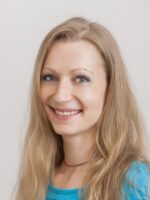
Monika Růžičková, BA
Czech Republic
College of PE and Sport PALESTRA, Prague
The mental health and physical benefits of yoga breathing exercises in menopausal women
The mental health and physical benefits of yoga breathing exercises are obvious, but the effect on selected bio-psycho-social indicators of health in menopausal women has not yet been sufficiently investigated. Therefore, the purpose of this study was to investigate how menopausal women respond to a simple exercise unit of 20-30 minutes including breathing techniques that was implemented once a day in the evening for 28 days. The yoga program was compiled based on the system Yoga in daily life according to Paramhans Swami Maheshwarananda. The aim of this intervention was to determine whether this exercise unit has a positive benefit on blood oxygenation, reduction of heart rate, improvement of endurance and effect on emotional state in menopausal women. The research group consisted of post-menopausal women permanently living in a big city, in Prague. A total of 16 women’s data were analyzed. The average age was 58.5 years. Women with asthma, chronic obstructive pulmonary disease, heart disease, ongoing treatment for oncological diseases and hormone replacement therapy were excluded from the intervention. Differences in measured values before and immediately after exercise were compared, as well as changes between the beginning and end of the intervention. Questionnaires (resilience and POMS) and an interview in the form of a free statement, which lasted between 5 and 10 minutes, were used to collect data. The answers to the free statement were divided into several levels: physical, psychological, social. Blood saturation and heart rate measurements were obtained using a finger pulse oximeter. The collected data were processed into contingency tables and analyzed in the statistical program Jamovi. The practice of breathing yoga exercises has been shown to be effective not only in reducing tension and increasing vitality, but results have been proven to reduce fatigue, anger, depression and confusion. At the end of the intervention, a higher score of resilience values was found. A moderate effect on heart rate reduction was demonstrated. The values measured just before and after the exercise unit showed more significant deviations, a smaller improvement was also found by comparing the values obtained at the beginning and at the end of the intervention, although there was a slight decrease in pressure over the course of 28 days, but this effect does not appear to be statistically significant. Analysis of the obtained data showed a moderate effect on blood oxygenation. Overall, the participants showed better results immediately after the exercise than in the long-term effect. The overall results of the research indicate a positive effect on bio-psycho-social health in postmenopausal women. A monitored exercise unit of breathing exercises could contribute to deepening the effect and enriching regeneration procedures in a spa environment during longer stays. This work can be an inspiration for further researches devoted to the effects of specific breathing exercises as well as different intensity of implementation in the implementation of an exercise unit based on yoga on a specific reference population.
Keywords: Health promotion, menopausal period, resilience, System Yoga in Daily Life breathing techniques
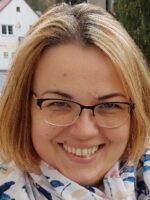
Lesia Shuranova, MBA
Czech Republic
Zdravotně sociální fakulta, Jihočeská univerzita v Českých Budějovicích
Lesia Shuranova, MBA, vystudovala obor Všeobecné lékařství, do roku 2020 pracovala jako lékařka na oddělení RHB Oblastní nemocnice Příbram, a.s. Od roku 2020 je studentkou prezenční formy doktorského studia ZSF JCU. Zabývala se problematikou pacientů po cévní mozkové příhodě, koordinovanou rehabilitací. Je členkou České lékařské komory a České neurorehabilitační společnosti. Držitelka diplomu celoživotního vzdělávání ČLK. Je řešitelkou projektu „Koordinovaná rehabilitace u lidí po CMP a její návaznost po propuštění z nemocnice“ (GAJU 066/2022/S).
Lesia Shuranova, MBA, graduated in General Medicine. Until 2020, she worked as a physician in the RHB Department of the Regional Hospital Příbram, a.s. Since 2020, she has been a full-time doctoral student at ZSF JCU, focusing on the issues of post-stroke patients and coordinated rehabilitation. She is a member of the Czech Medical Chamber and the Czech Neurorehabilitation Society. She holds a lifelong education diploma from ČLK and is also the principal investigator of the project „Coordinated Rehabilitation for People After Stroke and its Continuity After Hospital Discharge“ (GAJU 066/2022/S).
Coordinated rehabilitation and quality of life: uniting force after a stroke
Quality of life assessment is often associated with health and illness aspects. Research directions and practical approaches exist on how to measure and improve the quality of life of patients after a cerebrovascular accident (CVA) and in various health contexts. Quality of life for patients is monitored in various studies, regardless of their conditions, such as chronic illnesses, oncological diseases, and it is also examined in terms of differences based on the patients‘ gender and age (Gurková, 2011).
Currently, approximately eighty million people on the planet suffer from the consequences of a cerebrovascular accident, with about thirteen million new patients with this condition added each year. Importantly, in eighty-five percent of cases, CVAs can be predicted, and after diagnosis, their negative impacts can be effectively mitigated through treatment (Feigin et al., 2007). CVAs are the second most common cause of non-traumatic death and the third most common cause of death in the Czech Republic. This condition often leads to disability in individuals over the age of 60 (National Cerebrovascular Program of the Czech Republic, 2020). The prognosis for this disease is always uncertain and depends on the extent of brain tissue damage. Approximately 40% of patients die within one year of experiencing a CVA (Kalita et al., 2006).
This acute neurological event, caused by disrupted brain circulation, can result in various physical, cognitive, and emotional changes that affect self-perception and identity formation.
Supporting clients after a CVA through coordinated rehabilitation is essential for achieving optimal recovery and improving the quality of life for patients. The changes and challenges that a CVA brings can be very demanding and require a comprehensive approach. According to the National Plan for Equal Opportunities Support for Persons with Disabilities for the period 2021–2025 (National Plan for Equal Opportunities Support for Persons with Disabilities for the period 2021–2025, 2020), multidisciplinary rehabilitation aims to eliminate or reduce the progression of the disease or the consequences of injury and alleviate their impact through systematic, integrated, and coordinated planning and management of medical, social, work-related, educational, technological, and other tools.
Rehabilitation coordination is based on the UN Convention on the Rights of Persons with Disabilities (2007), placing an obligation on states that have ratified the convention to organize, expand, and strengthen the coordination of healthcare, employment, education, and social services. According to Švestková (2020), the fundamental characteristics/principles of coordinated rehabilitation include timeliness, complexity, continuity, coordination, and collaboration.
The main strategy for rehabilitating CVA patients is to achieve their independence. This can be achieved through early, comprehensive, and fully coordinated teamwork.
A group of authors led by Minor et al. (2022) conducted a study to establish a rehabilitation plan for patients discharged from the hospital after a CVA, which could predict their activity limitations. In their retrospective research, they included patients aged 18 to 80 with mild CVA, without significant cognitive or motor disorders. They used the FIM test along with other tests when creating the rehabilitation plan and conducting follow-up assessments after 6 months. According to the results of the study by Minor and colleagues (2022), standardized discharge measures can predict future limitations, which can aid in future treatment processes.
The Functional Independence Measure (FIM) assesses physical and cognitive impairments (Lippert-Gruner, 2005). This scale focuses on the burden of care – that is, the level of disability, which shows the burden of caring for the patient. FIM assesses six functional areas (self-care, sphincter control, transfer, locomotion, communication, and social cognition), falling into two categories (motor and cognitive). The FIM test allows documenting the bio-psycho-social functional status of patients. Using the FIM test is relatively simple, but it requires completion of a course and obtaining a license from UDSMR.
Coordination of rehabilitation interventions is crucial to ensure effective care. Different professionals, such as physiotherapists, speech therapists, psychologists, and others, collaborate and keep each other informed about the patient’s plans and progress. Communication among the team of professionals is essential for coordinating therapeutic activities, monitoring progress, and making any necessary adjustments to the rehabilitation plan. This ensures that therapeutic interventions are designed to be interconnected, leading to a synergistic effect.
Planning and coordinating rehabilitation interventions offer several advantages for patients. It ensures efficient use of time and resources, minimizes overlap of therapeutic activities, and maximizes the synergistic effect of therapies. Consistent coordination ensures that patients receive optimal and comprehensive care. Experts can share information about the patient, discuss their progress and needs, and jointly evaluate the effectiveness of therapeutic interventions. This ensures that the rehabilitation plan is dynamic and flexible, adapting to the individual needs of the patient and updated in line with their progress.
Coordinated rehabilitation also allows the use of various therapeutic approaches and techniques. Each professional brings specific skills and knowledge to the rehabilitation process, collectively providing patients with a wide range of therapeutic interventions.
Another advantage of coordinated rehabilitation is continuity of care. A team of professionals works together on a long-term rehabilitation plan that is regularly updated and adjusted based on the patient’s progress. This ensures that rehabilitation is not limited to individual sessions but is part of a long-term process. Patients are supported and monitored throughout their rehabilitation, increasing the chances of success and reducing the risk of an ineffective or uncoordinated approach.
Therefore, planning and coordinating rehabilitation interventions are crucial to achieving optimal outcomes in post-CVA rehabilitation. This approach ensures individual and comprehensive care, the use of various therapeutic approaches, and continuity of care. Patients have a greater chance of successful recovery and achieving the best possible quality of life after a CVA
Keywords: Coordinated rehabilitation, Quality of life, Stroke, FIM
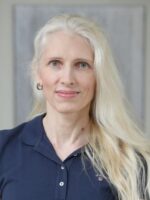
Assoc. Prof. PhDr. Daniela Stackeová Ph.D., Bc. Magdalena Špatenková
Czech Republic
College of Physical Education and Sport PALESTRA, Prague
Professionale Profile Assoc. Prof. PhDr. Daniela Stackeová Ph.D.
Absolventka oboru fyzioterapie, specializace somatopsychoterapie na FTVS UK v Praze, kde absolvovala i postgraduální studium a rigorózní řízení v oboru kinantropologie. 2015 absolvovala habilitační řízení v oboru kinantropologie na FSpS MU v Brně. Má za sebou dlouholetou pedagogickou a výzkumnou praxi, do roku 2013 na FTVS UK, od 2015 na VŠTVS Palestra s.r.o. v Praze, v současnosti také externě na FSS VŠ Humanitas ve Vsetíně a na 2. LF UK v Praze. Je autorkou řady publikací, které jsou věnovány psychosomatice v oblasti pohybového systému, fitness a psychologickým aspektům pohybové aktivity. Je členkou výboru Společnosti psychosomatické medicíny ČLS JEP a jeho vědeckým sekretářem, šéfredaktorkou časopisu Acta Salus Vitae a členkou sboru recenzentů časopisu Psychosom.
Verification of the Effect of an Exercise Program Using Walking and Diet Adjustment in Hypertension
One of the leading risk factors for cardiovascular disease is hypokinesis. Therefore, an exercise regimen is emphasized for the prevention and control of hypertension, while at the same time aiming to reduce overall cardiovascular risk in addition to achieving normal blood pressure values.
The aim of this study was to verify the effect of an exercise programme using walking and dietary modification on the reduction of blood pressure values in hypertension, while the effect of the intervention on weight reduction and change in body composition was also studied.
The research method in our work was case study. The proband was a physically inactive overweight woman, age 55 years, treated hypertensive, whose blood pressure at entry to the program reached the values of mild hypertension even with treatment. Baseline data were resting blood pressure values measured for 7 days in the morning and evening, a two-day record of physical activity, a seven-day record of diet, diagnosis and analysis of body composition with the InBody device, and calculation of the WHR index. The proband developed a physical activity intervention program using walking for 12 weeks, a minimum of 5 times per week, at moderate intensity, with a gradual increase in daily walking time from 30 to 60 min/day. As an adjunct to the exercise intervention, she was recommended a dietary modification. At the end of the follow-up period, blood pressure values were measured in the same way, a diagnostic and body composition analysis was performed with the InBody device, and the WHR index was calculated. The intervention program was also evaluated in relation to overweight and body composition as important factors in hypertension.
After 12 weeks of the intervention programme, the mean reduction in systolic blood pressure was 6,29 mmHg in the morning and 4,86 mmHg in the evening. The average reduction in diastolic blood pressure was 4,57 mmHg in the morning and 3,14 mmHg in the evening. There was also a decrease in heart rate by an average of 4,07 beats per minute. At the same time, the intervention program led to a reduction in the proband’s body weight (by 7,2 kg), a decrease in BMI (from 27,8 to 25,5 kg/m2), a decrease in body fat percentage (by 3,9 %) and a decrease in WHR index (from 0,91 to 0,88).
These results confirmed that regular physical activity and dietary modification play an important role in the treatment of high blood pressure and verified the effectiveness of expert recommendations in hypertension. They also confirmed the positive effect of these recommendations on weight reduction and body composition. In summary, this work verified the beneficial effects of walking supported by dietary modification on the following risk factors for cardiovascular disease – high blood pressure, overweight, body fat, and central obesity.
Keywords: hypertension, blood pressure, walking, exercise intervention
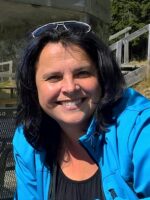
doc. PhDr. Markéta Švamberk Šauerová, Ph.D.
Czech Republic
College of Physical Education and Sport PALESTRA, Prague, Czech Republic
Markéta Švamberk Šauerová pracuje na VŠTVS PALESTRA a na Pedagogické fakultě UK (katedra psychologie), má rovněž bohaté zkušenosti ze soukromé praxe. Dlouhodobě zabývá psychologickými souvislostmi duševní pohody různých cílových skupin. Cíleně věnuje pozornost problematice well-beingu žáků, zejména specifikům podpory sociálního well-beingu v rámci třídního klima. Rovněž se věnuje problematice workplace wellness a work-life balance.
Social wellbeing - a key factor in the mental health of children and adolescents
This paper presents a long-term project to promote social wellbeing of pupils for use in the educational environment of schools. Social wellbeing emphasizes well-being in social relationships, specifically in the classroom environment and the overall school climate. It focuses on improving the atmosphere, rule-following, mutual respect, tolerance, as a basic source of social and individual well-being. The paper responds to the steady rise in mental health problems of children and adolescents (data from the National Institute of Health, CSU), the increase in self-harm and suicide in this age group, based on a long-term analysis of the school environment in which the author is involved, the results of research at home and abroad.
Guiding pupils to achieve life’s optimum through the promotion of a healthy social environment has a positive impact on school performance, according to current domestic research. A healthy social environment increases tolerance for differences, reduces anxiety in children and adolescents, and enables them to maximise their own potential (more closely Simons, 2020, 2017; Smetáčková, 2023; Kučerová, 2023; Švamberk Šauerová, Smetáčková, 2022).
Thus, caring for the social wellbeing of pupils in schools must be one of the key areas in the comprehensive promotion of mental health, especially in the long term.
The theoretical starting points of the paper are different conceptions of „wellbeing“, in which a different quality of this state is highlighted (cf. Jandová, 2021), the starting points are also the thought concepts of Z. Matějček, a leading child psychologist focusing on the needs of children (positive social bonds in the family and school environment, engagement in a variety of activities supporting physical, intellectual and emotional development, a sense of safety and security, a healthy sense of self, social fulfilment and a sense of an open future).
This background was used to design a project to promote the social wellbeing of pupils, the project was prepared in collaboration with Czech Television (CT Edu). Taking into account the possibilities of the school environment, it is ready for implementation in the classroom. All the aspects mentioned above are addressed in the different parts of the presented project, as well as the possibilities of the classroom teachers and their sense of security in working with personal development techniques.
Keywords: social wellbeing, project, healthy environment, prevention, anxiety, classroom lessons.
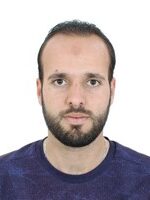
PhD. Isahk Torki
Impact of adapted physical activity in enhancing the quality of life for people with disabilities
Mental and psychological health issues are on the rise globally. People with disabilities are at greater risk of poor quality of life. The majority of people with disabilities experience poorer overall health, restricted social integration, and a low quality of life.
Physical activity and exercise are the cornerstones of chronic illness prevention and health improvement for all individuals, whether they are disabled or not, and there is convincing evidence of the advantages of physical activity and exercise across diverse populations with and without disabilities. People with disabilities can participate in personal activities and get regular physical activity through adaptive physical activity. However, little attention has been paid to the possible benefits of adapted physical activity.
This narrative review examines current research on the influence of involvement in adapted physical activity (APA) on the quality of life (QL) of people with disabilities. The literature revealed that involvement in adapted physical activities is an effective strategy to improve several aspects of quality of life for people with disabilities. Adapted physical activity and sport demonstrated to be highly essential aspects in sustaining overall health, engagement in society, and mental well-being.
Keywords: adapted physical activity- quality of life- people with disabilities
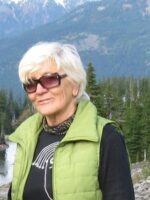

Ass. Prof. Ludmila Vacek, PhD., Ass. Prof. PhDr. Zuzana Kornatovská, PhD., DiS.
Ludmila Vacek,Ph.D.
Canada
Global SPA Concepts, Vancouver, BC,
PhDr. Zuzana Kornatovská Ph.D., DiS
Czech Republic
University of South Bohemia, České Budějovice
2009 – till now Assistant Professor, University of South Bohemia in Ceske Budejovice, Faculty of Education, Department Education
2016 – Title PhDr. Rigorous examination: Faculty of PE and Sport, Charles University in Prague
2014 – Title PhD. Faculty of Health and Social Studies, University of South Bohemia in Ceske Budejovice, Study program: Prevention, correction and therapy of the health and social problems in children, adults and seniors. Research and theses: KORNATOVSKA, Z. (2014) Availability, organizations and health – social benefits of the controlled movements activities in children with disability. ZSF JU: Ceske Budejovice.
Exercise wellness - solutions for reducing symptoms of depression
Depression is the most common and prevalent mental disorder today. It is reported that 30 percent of the population in Canada suffers from symptoms of depression, which includes children and adolescents in addition to adults. This condition not only reduces the quality of family relationships but also leads to a loss of work productivity. The suffering of the person affected by the symptoms of depression and the related suffering of the people around him are also significant. Year after year, the consumption of antidepressants increases, but they have side effects (headaches, apathy, loss of motivation, nightmares, dizziness, etc.). Wellness offers a health preventive solution to prevent symptoms of depression or contributes significantly to the solution of the depression symptoms. The main of these is „exercise wellness“. „Exercise wellness“ is effective for alleviating mild to moderate symptoms of depression and can be seen as an accompanying „medicine“. In addition, „exercise wellness“ contributes to the maintenance of cardiovascular health, a healthy weight and reduces the risks of developing other civilization diseases. Studies have documented a significant improvement in psychological functioning resulting from the thermogenic, endorphin and catecholamine somatic responses to prolonged exercise. „Exercise wellness“ also improves self-confidence and self-esteem, attenuates cardiovascular and neuro humoral responses to mental stress. Yoga is a perfect activity from the area of “exercise wellness” relieving symptoms of depression. Yoga has been shown to increase levels of gamma-aminobutyric acid, or GABA, that helps regulate nerve activity. Also hiking or walking help reduce stress, anxiety, blood pressure, and cortisol levels, producing a calming effect only nature can offer. Also other outdoor activities as bike riding, mountain bike riding, kayaking, canoeing and paddle boarding are included in the area of „exercise wellness“. They represent excellent way to curb the stress and anxiety and reduces the risk of depression. The second helpful solution is „wellness gastronomy“, i.e. a healthy diet. Persons with symptoms of depression often tend to have bad eating habits. The third helpful solution is healthy sleep. Persons with depressive symptoms tend to have problems falling asleep and they may suffer from certain sleep disorders. Wellness offers the mastery of simple relaxation techniques as a self-help solution, or offers a number of services that lead to relaxation and thus contribute to regeneration. Our paper highlights the importance of promoting exercise wellness enjoyment for the population with symptoms of depression. Wellness specialists should guide clients with symptoms of depression to slowly build up the frequency, duration and intensity of activity; encouraging them to be self-compassionate toward the activity; suggesting they engage in outdoor activity, and/or participate with a buddy or group, and to incorporate self-monitoring in the link between exercise wellness activity and improved mood. Wellness specialists are encouraged to use these recommendations—especially maximizing choices in exercise wellness, enhancing activity enjoyment and help clients with symptoms of depression to move, recover and flourish. Presented recommendations may also be used to tailor future interventions and inform policy guidelines to reduce depression rates not only in Canada.
Keywords: Canada, depression, education, health promotion, public health, wellness
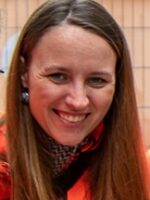
Ing. arch. Ing. Andrea VÁŠKOVÁ
Czech Republic
Department of Architecture, Faculty of Civil Engineering, CTU in Prague
Availability of areas and facilities for physical activity for the non-registered public
The conference on sustainability and accessibility of sports infrastructure organised by the NSA in 2022 showed how the issue of accessibility of sports and physical activities for citizens is crucial in the context of ensuring a healthy lifestyle for the general non-registered public. It also confirmed that there is a lack of any national concept for the country that addresses this topic. One of the key factors in promoting regular physical activity among the general public is accessibility, both geographic and financial. This paper outlines the current approaches to the development of databases for these places in the Czech Republic, which is the subject of the author’s PhD thesis. They demonstrate that unless a national register of areas and facilities for sport and physical activity is quickly created, it is impossible to have an objective basis for planning the urban development of these places. Using the example of an analysis of selected cities in the country, it is shown that just few existing facilities are year-round complex wellness centres and that there is an insufficient number of them in relation to the demands of the people in the localities. Finally, a system of uniform methodology for the registration of suitable places and their relevance for the preparation of urban plans of town and municipality is outlined.
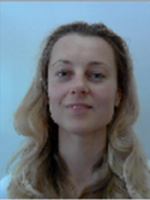
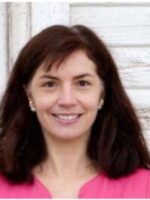
Markéta Vopatová, MA, Ass. Prof. PhDr. Renata Větrovská, MA, PhD.
Markéta Vopatová, MA
College of Physical Education and Sport PALESTRA, Prague
20 years of experience in senior management in the business and political sectors.
Since 2016 – Consultation and methodology for supporting and maintaining the health of individuals with high work and performance demands, as well as for seniors.
Collaboration with academics at PALESTRA University, the Institute of Endocrinology of the Czech Republic in Prague, and prominent figures in the Czech and international commercial, educational, and political spheres.
Currently preparing the evaluation of a two-year case study titled „Stress & Hormone Cortisol & Breathing Exercise Context.“
20 let činnosti ve vrcholovém managementu v obchodní a politické oblasti.
Od roku 2016 – Poradenství a metodika k podpoře a udržení zdraví osob s vysokou pracovní a výkonnostní zátěží a také pro osoby v seniorském věku.
Spolupráce s akademiky VŠ Palestra, s Endokrinologickým ústavem ČR v Praze a významnými osobnostmi české i zahraniční komerční, pedagogické a politické sféry.
Nyní příprava vyhodnocení dvouleté případové studie “Stress & Hormone Cortisol & Breathing exercise context”
Ass. Prof. PhDr. Renata Větrovská, MA, PhD.
Institute of Physical Education Medicine, 1st Faculty of Medicine, Charles University, Prague
Breathing and relaxation exercises as part of a wellness routine for men in executive positions
Introduction: The health state of male executives who are exposed to high levels of stress has yet to be thoroughly studied. Breathing and relaxation exercises could serve as an appropriate wellness routine to help them manage stressful conditions in the workplace as well as to prevent health problems related to an unhealthy lifestyle.
Aim: Our study comprises several phases and the objectives of each phase were chosen accordingly. In the first phase of our pilot study, we aimed to determine how effective a six-week exercise intervention program would be in promoting the mental and physical health of a selected group of men in executive positions. In the subsequent stages, we investigated how the programme served to educate these men and whether the participants continued an exercise routine over the next two years.
Methodology: Our research was based on a case-by-case evaluation of 10 men aged 35-55 years who work in executive positions. The men were asked to take part in several research surveys (8 in total) in a period of two years. After an initial investigation which included: an anamnestic examination and medical history, an assessment of posture and an anthropometric indicators, questionnaires, the men’s so-called weak points were established. On the basis of these weaknesses, a simple routine consisting of breathing and relaxation exercises was developed. The participants took part in the routine once a day for 15 minutes. The methods of data acquisition were as follows: The Inventory of Manifestations of Burnout Syndrome questionnaire; The Q8+1 self-awareness assessment questionnaire; the visual examinaton and anthropometric indicators measurements (chest elasticity, waist-hip ratio).
The investigations were carried out in several stages: the pre-interventional, interventional; at the conclusion of the intervention; eight weeks after the intervention; and the outcome investigation two years after initiation of the study.
Results: The individual case reports indicate that on completion of the exercise program, there was an improvement in all areas. Our research revealed that it is possible to attain improvements in psychological functions as well as in certain anthropometric parameters (chest elasticity) through targeted exercise intervention. However, almost all of the indicators that showed improvement after completion of the program reverted to their original values after two years. None of the men involved in the study persisted with regular exercise, even though all of them acknowledged the positive impact the program had on their well-being.
Keywords: breathing, exercise, health of men in executive positions, stress, wellness.

Ass. Prof. Anna Zwierzchowska, PhD.
The electronic diagnostic procedure to support the holistic treatment of spa patients: a pilot study
Advances in technology and electronic information collection are fostering the development of new procedures and clinical decision-support tools for therapies in rehabilitation hospitals and spa resorts. Although the electronic collection of medical record data is becoming more common in many healthcare facilities, to the best of our knowledge, the procedure does not take into account the complementarity of these activities with the need for effective care of the beneficiaries in rehabilitation hospitals and spa resorts. Such activities are interim and often target the specific needs of the medical facility (statistics on prevalence rates, age of patients, demand for specialists), which is undoubtedly important for the potential adjustment of the medical care plan. However, from the perspective of the effectiveness of the patient’s treatment, this is equally important in terms of the holistic approach to this process in rehabilitation and prevention.
The purpose of the present study was to present an electronic procedure and its tools aimed to supplement the medical records that complementarily support taking medical history and physical examinations. It was assumed that the developed procedure and tools incorporated into taking medical history and physical examination would be effective in identifying the needs of the spa patients, thus facilitating correct classification for rehabilitation performed by doctors and physiotherapists. Furthermore, it seems that such activities can be educational in nature for spa patients by raising their awareness of the cause-effect relationships for healthy living.
The present research study is part of the project [i] (Task 3), which aims to offer new modern rehabilitation services that are innovative in the regional market within the framework of a comprehensive rehabilitation facility of the Lidzbark Health Center, Poland (natural therapy and rehabilitation facility). The services (inpatient and outpatient) will be provided for up to 400 patients per day, in a hotel with a dining section for 250 older adults and/or patients following injuries due to accidents, surgeries, and strokes. The preliminary results are satisfactory as they allow us to conclude that the new procedures and tools used to provide diagnosis and therapy services should be effective in facilitating the qualification of patients of spa hospitals.
[i] „Technologies improving the Quality of Life“. – Norway Grants, with its beneficiary being Accessmedica. The Polish Agency for Enterprise Development (PARP) is the operator of the program “Development of Entrepreneurship and Innovation” implemented under Norway Grants. It assumes support for innovative solutions in Polish enterprises in three major areas: Green technologies, i.e. environmentally friendly technologies (Green Scheme), blue growth technologies, i.e. development of enterprises of marine and inland water area (Blue Growth Scheme), welfare technologies that improve the quality of life, including for older adults (Welfare Technologies Scheme).



